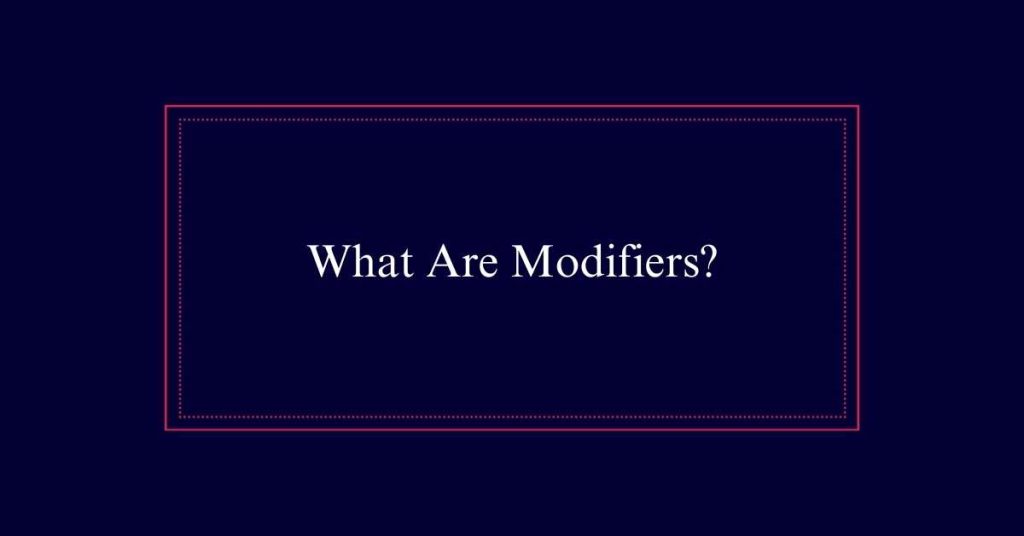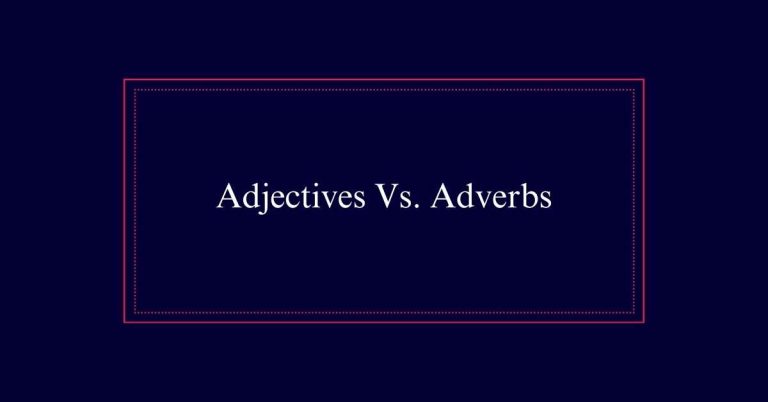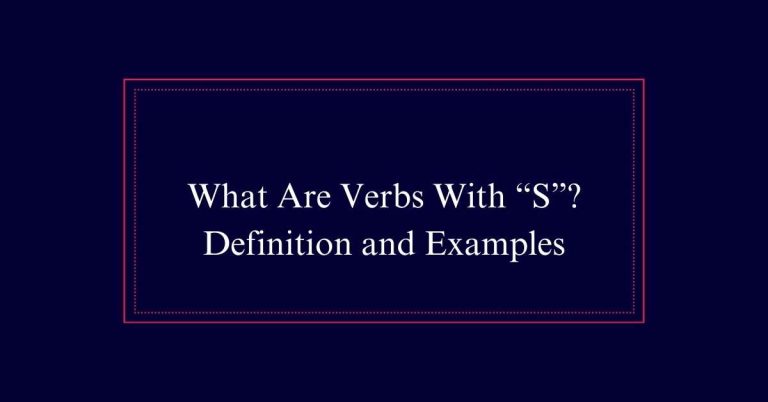What Are Modifiers?
Modifiers are words, phrases, or clauses that enhance meaning by describing or limiting other words. Common examples include adjectives, which describe nouns, and adverbs, which modify verbs or adjectives. Correct placement of modifiers is essential to avoid confusion. For instance, in ‘The man drove the car quickly,’ ‘quickly’ is an adverb modifying ‘drove.’
Misplaced modifiers can lead to unclear sentences, such as ‘Quickly the man drove the car,’ where the intended meaning might be ambiguous. Single-word modifiers, modifier phrases, and clauses each play unique roles in enriching sentence clarity.
Understanding Modifiers
Modifiers are essential components of sentences that add detail and enhance meaning. They can be single words, phrases, or clauses. Examples include adjectives like ‘yellow,‘ adverbs like ‘quickly,’ and prepositional phrases like ‘beneath the car.
Modifiers provide additional information, making sentences more descriptive and engaging. Proper placement is vital; a modifier should be positioned next to the word it modifies to avoid confusion. Misplaced modifiers can lead to unclear or awkward sentences. For example, ‘She only eats vegetables’ implies she eats nothing but vegetables, whereas ‘She eats only vegetables’ clarifies her exclusive diet.
Types of Modifiers
Different types of modifiers serve various purposes in enhancing and clarifying sentences. Adjectives and adverbs are the most common single-word modifiers. Adjectives describe nouns, while adverbs modify verbs, adjectives, or other adverbs.
Phrases, such as adjective and adverb phrases, provide more detail. Clauses, like relative and adverbial clauses, add complex information. Prepositional phrases also act as modifiers, specifying relationships between elements in a sentence.
Limiting modifiers, such as ‘only’ and ‘just,’ restrict meaning to particular aspects. Each type of modifier, when used correctly, adds depth and precision to writing.’

Single Word Modifiers
Single word modifiers, such as adjectives and adverbs, provide concise and specific descriptions in sentences. Adjectives modify nouns by describing qualities or quantities. For example, in ‘The red car,’ the word ‘red’ is an adjective that describes the noun ‘car.’
Adverbs modify verbs, adjectives, or other adverbs, often indicating how, when, where, or to what extent. For instance, in ‘She quickly ran,’ the word ‘quickly’ is an adverb modifying the verb ‘ran.’
Proper placement of these modifiers is essential for sentence clarity. Misplaced single word modifiers can lead to confusion. For example, ‘Only she likes pizza’ means she alone likes pizza, while ‘She only likes pizza’ suggests pizza is the only thing she likes.
Modifier Phrases
In English grammar, modifier phrases add detail and depth to sentences by providing additional information about a noun, verb, or clause. These phrases enhance the meaning and clarity of your writing, making it more engaging and precise.
Modifier phrases can include:
- Adjective Phrases: Describe nouns or pronouns (e.g., ‘The house, painted red, stood out.’)
- Adverb Phrases: Modify verbs, adjectives, or other adverbs (e.g., ‘She sings with great passion.’)
- Prepositional Phrases: Offer additional details (e.g., ‘The book on the table is mine.’)
- Participial Phrases: Provide extra information (e.g., ‘Running late, he skipped breakfast.’)
Modifier Clauses
Modifier clauses add depth to sentences by providing additional information about the subject or action. These clauses can be either adjective clauses or adverbial clauses.
Adjective clauses describe nouns and usually begin with relative pronouns like ‘who,’ ‘which,’ or ‘that.’ For example, ‘The book, which is on the table, is mine.’
Adverbial clauses modify verbs, adjectives, or other adverbs and often start with subordinating conjunctions like ‘because,’ ‘although,’ or ‘when.’ An example is, ‘She sings when she is happy.’
Proper use of modifier clauses enhances sentence clarity and provides detailed context, making writing more engaging and informative. They should be clearly connected to the words they modify to avoid confusion.
Proper Modifier Placement
Accurate placement of modifiers is crucial to guarantee that sentences are clear and precise. Misplaced modifiers can lead to confusion, making it difficult for readers to understand the intended meaning.
To confirm proper placement:
- Place single-word modifiers directly before the words they modify.
- Position modifying phrases and clauses next to the word they describe.
- Confirm that introductory modifiers clearly relate to the subject of the main clause.
- Use commas to set off non-restrictive modifiers for clarity.
Misplaced Modifiers
Misplaced modifiers occur when a modifier is not placed near the word it is intended to modify, leading to confusing or awkward sentences.
For example, in the sentence ‘She almost drove her kids to school every day,’ the word ‘almost’ is misplaced. It suggests she nearly drove her kids but didn’t. The corrected sentence, ‘She drove her kids to school almost every day,’ clarifies the intended meaning.
Proper placement of modifiers guarantees that the sentence conveys the correct information. Misplaced modifiers can lead to misinterpretations and reduce the clarity of writing.
Dangling Modifiers
A dangling modifier is a descriptive word or phrase that fails to logically modify any word in the sentence. This creates confusion and makes the sentence unclear.
To fix dangling modifiers, make sure the modifier clearly refers to a specific word in the sentence.
- Example of a dangling modifier: ‘Hiking the trail, the birds chirped loudly.’
- Corrected version: ‘Hiking the trail, we heard the birds chirp loudly.’
- Common causes: Omitting the subject that the modifier is supposed to describe.
- Identifying solution: Insert the intended subject right after the modifier.
Squinting Modifiers
Squinting modifiers often create ambiguity by appearing to modify two different parts of a sentence simultaneously. This dual potential leads to confusion about which part of the sentence is being modified.
For instance, in the sentence ‘Running quickly improves your health,’ it’s unclear whether ‘quickly’ modifies ‘running’ or ‘improves.’ Such ambiguity can disrupt the reader’s understanding.
To avoid squinting modifiers, position the modifier immediately before or after the word it intends to modify. This clear placement guarantees that the sentence conveys the intended meaning without confusion.
For example, ‘Quickly running improves your health’ clarifies that the speed of running is the focus.
Practical Examples
In practical examples, the correct placement of modifiers greatly enhances sentence clarity. Consider the sentence, ‘She almost drove her kids to school every day.’ The word ‘almost’ modifies ‘drove,’ implying she did not actually drive them. Correct placement clarifies intent: ‘She drove her kids to school almost every day.’
Here are some tips for using modifiers effectively:
- Place modifiers near the word they modify: This minimizes ambiguity.
- Avoid dangling modifiers: Make sure the modifier clearly refers to a specific word.
- Use commas for clarity: Separate introductory modifiers with a comma.
- Re-evaluate squinting modifiers: Position them to avoid dual interpretations.






